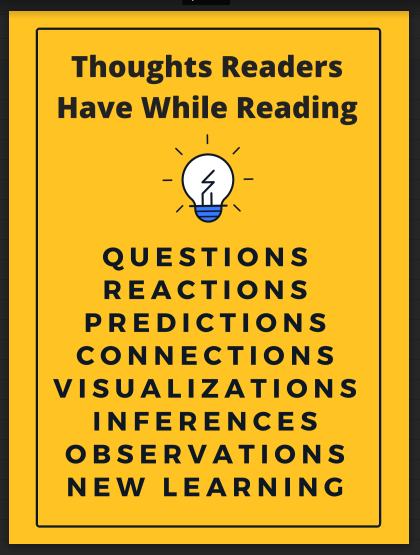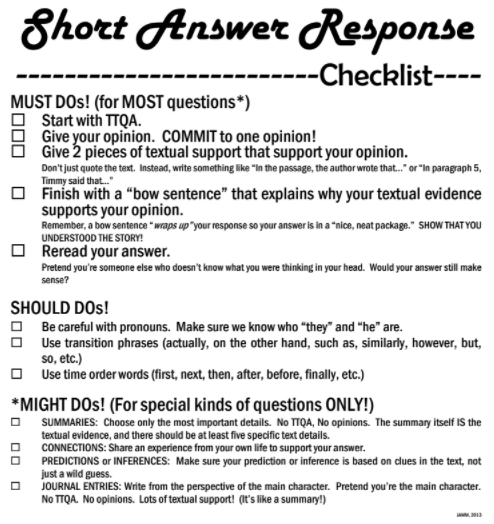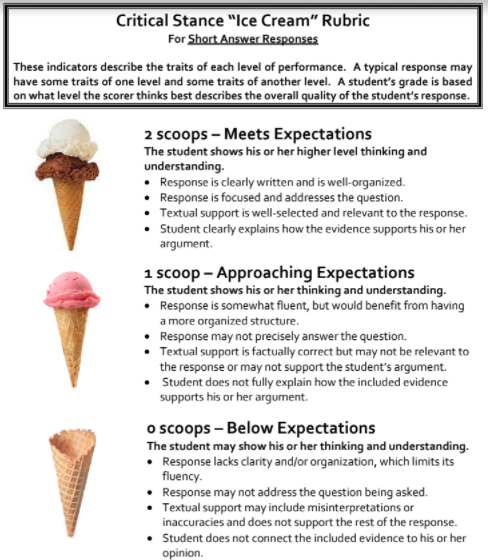Viewing: October, 2019
October 24, 2019
Starting Science, Short Answer Responses, and more!
Someone asked me last week what my favorite subject to teach was. I’ve been asked that numerous times, and I think it’s one of the hardest things to answer. I love teaching reading, because books allow us to take a (metaphorical) field trip to new places, new times, and new situations, and to talk about each one. I love talking about what we read! I love teaching math, because it’s fascinating to see how skills can build on one another, and that’s where I tend to see kids have those “lightbulb” a-ha moments most often. Science is a real passion of mine, and I absolutely love seeing kids draw their own conclusions in class. (I’m also biased, because I wrote three of our four science units in fourth grade, so I know the lessons well and feel a sense of pride.) It’s at this point that I realize that I’ve given a snub to writing and social studies, and I quickly scamper to explain that I love those too, and I end up just saying that I love teaching everything. Perhaps it changes from day to day – and today, it was all about science!
The kids are SO excited to share their science projects with the class, which I was thrilled to see. We only got through two projects today, and the kids know that it will take several days to have everyone share. Today’s creative presentations taught us about the scientific properties of apples and apple trees, as well as about the effervescent qualities of Polident tabs. We continued the science theme of the day and kicked off our first science unit, which is all about energy. Today, we learned about electrical energy and how static electricity flows from negative to positive. We teamed up with Mrs. Matos’s class, which we’ll do from time to time throughout the year.
We’ve kicked off our first science unit today with Mrs. Matos’s class! We’re learning about energy, and today, we started by learning how electricity flows in a circuit. #AskYourKid why we couldn’t take a wire and put a light at one end and a battery at the other. More tomorrow! pic.twitter.com/bEMuthNzXs
— Jon Moss (@MossTeaches) October 24, 2019

That’s not all, however! In reading, we’ve learned about the eight kinds of thoughts readers have while reading. I encourage kids to be aware of when these thoughts pop into their head, because these are what allow us to have rich discussions about what we read. These will be critical for when we launch book clubs in the late fall or winter.
We’ve moved on, in reading, to beginning our study of narrative elements. We’re going slowly (right now), because this is also our launch into short answer responses (SAR). Kids have been doing this for years, and each year, the expectations mature a bit. We drafted a SAR about the setting of the WONDERFUL book The Purple Coat, and students are working with partners to identify and explain the setting of the book The Josefina Story Quilt.

This week, we looked at the SAR checklist, which helps the students to learn what goes into a quality short answer response. TTQA stands for “Turn the Question Around”. A bow sentence shows how the textual evidence connects to the reader’s opinion. For example, if I wrote “Miss Viola Swamp was a talented teacher. I know this because she was very strict and yelled at the kids.” you might wonder why her yelling supported the idea that she was a good teacher. (Nowadays, we tend to frown on teachers who yell too much!) But if I added the sentence “The class was really wild, and she was the only person who could get them calmed down and working hard to learn.” you might better see the connection. That’s what a Bow Sentence does. The rest of these are probably more clear to you. We’ll be using this document a lot this year, and I’ll be sending home copies soon.

The Ice Cream Rubric doesn’t rate any ice cream cones. Instead, it focuses on how we assess a student’s short answer response. In class, we talked about this rubric’s value as more than something that helps to yield a grade. It helps students to know what a strong response looks like and helps them to evaluate their own work. Again, I have copies of this which will be sent home in the coming weeks.
In math, we’ve finished the first unit (as you know), and the math assessments will come home early next week. (I’d like you to sign and return them, and since I want to give you a few days to do that, I didn’t want to go over the weekend.) Right now, students are doing a great job learning about factors and multiples.
We’ve started learning about map skills, focusing on cardinal directions, latitude, and longitude. My class last year was kind enough to purchase us a dry erase globe, which has been a GREAT resource for introducing these skills.
More to come! As always, feel free to contact me with any questions.
Posted in Class Updates|By Jon Moss
